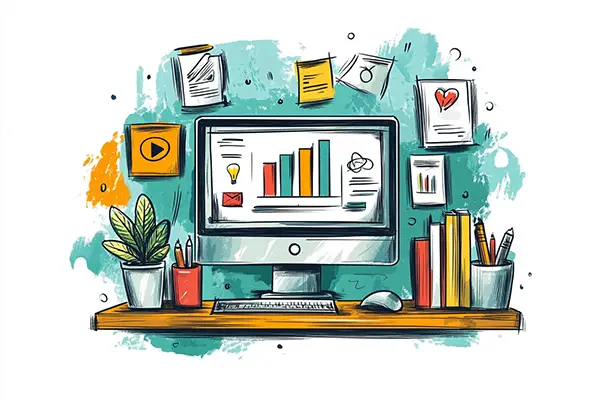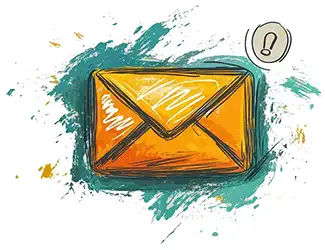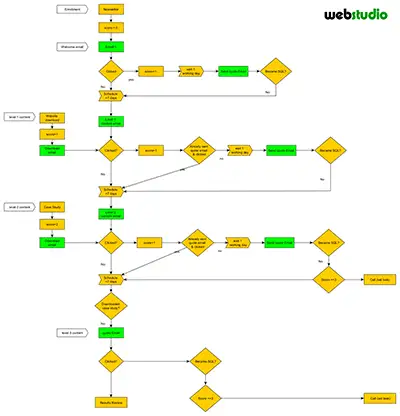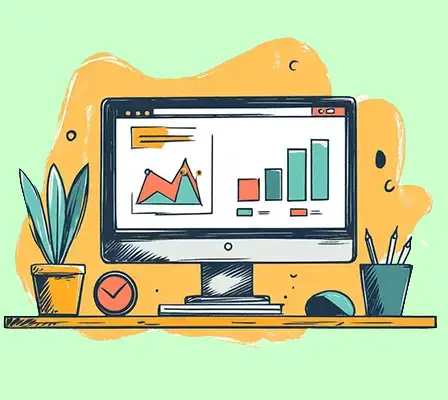WHY? Capturing email addresses is essential for building a direct line of communication with your potential customers. Unlike fleeting social media interactions, email allows you to engage prospects on a more personal level, guiding them through their decision-making journey and keeping your business front of mind.
Generating enough leads is a common struggle for many businesses. Companies often miss out on opportunities by only engaging with potential customers who are ready to make a decision, ignoring and not understanding how to capture email addresses for those in the early stages of their journey. You think the website is great but they are just not biting!
Information Swaps: Capture, Engage, and Nurture Your Prospects
Information swaps are a powerful way to identify and nurture potential leads at every stage of their journey. By offering valuable content - like guides, checklists, or case studies - in exchange for an email address, you not only capture leads but also gain insight into their engagement. Once you have their details, a CRM system allows you to track their interactions, helping you understand what they’re interested in and how close they are to making a decision. This process builds a connection, keeping your business top of mind as prospects move through their buying journey.

Understand User Types So you can give the content they need
The Four Types of Users
Users are at many stages of their journey and can be classified into four main types: spontaneous, methodical, humanistic, and competitive.
To cover all bases, it's essential to capture their email addresses and nurture their interest accordingly. In fact this section could be in two places, here and in the layouts blog. Simply, give the humanistic testimonials, the spontaneous a good call to action at the top of the page, the methodical more information to get their teeth into further down the page and compare yourself against others for the competitive.
Note from Neil: This is quite important so you should investigate user types further. We use this knowledge about user types for effective content creation and website layouts for our website redesign service.

So what type of content?
The bronze level is all about providing simple, high-value content that is easy to access and appeals to a broad audience. Examples include checklists, beginner guides, brochures, how-to articles, or infographics. This content should answer common questions or solve initial pain points, helping you capture interest and encourage users to take the first step by sharing their email addresses.
At the silver level, the goal is to deepen engagement and demonstrate your authority. Content here should be more detailed and tailored, such as case studies, whitepapers, datasheets, price guides or in-depth guides. This type of content highlights your expertise and builds trust by showcasing real-world examples or actionable strategies, moving leads closer to a purchase decision.
The gold level focuses on converting interested prospects into customers. Content at this stage is designed to address objections and provide the final push towards action. Examples include detailed proposals, product demonstrations, pricing guides, or consultations. This content should clearly outline the benefits of your solution and make it easy for leads to commit, whether it’s booking a call or making a purchase.

How to Set Up Forms to Capture Leads Effectively
Capturing emails effectively isn’t just about offering valuable content - how you present the form plays a critical role in conversion success. Depending on your audience, you can experiment with various methods to see what works best for each piece of collateral. Here are some of the most effective ways to place your forms:
- Simple On-Page Form
A straightforward form embedded directly into the page asking for an email. This works well for users who are ready to engage without distractions. - Popup When a Button is Clicked
Instead of showing the form right away, use a clear call-to-action button like “Download Now” or “Get the Guide.” When clicked, it triggers a popup form. This keeps the page clean while still encouraging sign-ups. - Floating Button with Slider Form
A small, noticeable button that “floats” as users scroll the page. When clicked, it expands into a slider form from the side or bottom. This is subtle yet accessible without interrupting the user experience. - Exit-Intent Popup
Triggered when the user moves their mouse to close the tab or leave the page, this popup presents a final opportunity to capture their details. It’s particularly effective for retaining users who might otherwise leave without signing up. - Popup on Element Visibility
This triggers when a user scrolls to a specific section of your page. For example, if they reach a “Benefits” or “Example” section, a form can appear, knowing they’re already engaged. - On Scroll Depth
You can set the form to appear once the user scrolls a certain percentage of the page — such as 50% or 75%. This is ideal for long-form content, as it targets those who have shown clear interest. - On Hover
When users hover over an element like a button or content area, a small form or call-to-action can appear. This subtle interaction is effective for drawing attention without being overly intrusive. - On Click
Similar to the button-triggered method, this appears when a user clicks on a designated link, button, or image. It's clean and engages users only when they’re interested. - On Page Load
A form appears immediately when the page loads. While it can capture attention, it’s best used sparingly as it can disrupt the user’s initial experience. - After a Certain Number of Seconds
Set the form to appear after a user spends a specific amount of time on the page — such as 10-15 seconds. This approach assumes the user is engaging with the content and increases the chance of sign-ups.

Try, Test, and Optimise
Each type of content (Bronze, Silver, Gold) may benefit from a different method. For example:
- Bronze: Simple, low-commitment forms (e.g., on-page or on-click popups).
- Silver: Subtle sliders or exit-intent popups targeting more engaged users and increase the fields, such as phone number.
- Gold: Timed popups or scroll-based triggers as these users are deeper in their journey.
The key is to test multiple approaches, track which form placements get the most conversions, and optimise for what works best for your audience.

The tactics we’ve discussed assume you’re already attracting the right type of traffic to your website - people who are genuinely interested in what you have to offer. If that’s not happening, then it’s time to take a step back and identify the root of the issue.
Ask yourself: Is the website failing to convert interested visitors, or are there simply not enough relevant users landing on the site in the first place? If your site struggles with conversions, you may need to refine the content, optimise calls-to-action, or implement more effective nurturing strategies. On the other hand, if traffic levels are low or unqualified, it’s likely an SEO or marketing issue—something that needs to be addressed with targeted strategies to attract the right audience.
The key takeaway is this: generating leads with email capture strategies works best when you have both—quality traffic and a website designed to convert. If you’re missing either, now is the time to address it and set your website up for success.

Moving users from one level of interest to the next is a process we call a drip campaign. This approach nurtures prospects gradually, providing the right content at the right time to guide them closer to a decision. Starting with the bronze level (basic downloads like checklists or guides), users gain initial value. From there, they move to the silver level (case studies or in-depth insights), showing a deeper interest in your solutions. Finally, the gold level (contact forms, consultations, or quotes) signifies a high level of intent and readiness to take action.
To help you get started, we’ve provided an example of a proven Email Drip Campaign Blueprint for you to download. This guide outlines the exact steps to nurture your prospects effectively, ensuring no opportunity is missed and prospects are encouraged to take the next step. By implementing a well-structured drip, you can keep your audience engaged and build trust, ultimately converting leads into loyal customers.

DOWNLOAD EXAMPLE - try it.
Download Our Drip Campaign Blueprint
Take the guesswork out of converting prospects into qualified leads. Download our comprehensive Lead Nurturing Drip Campaign guide and gain access to a proven framework that keeps your audience engaged, nurtures interest, and drives sales. Whether you're just starting with email marketing or looking to refine your strategy, this blueprint provides actionable steps and insights to turn your leads into loyal customers. Don't miss out—boost your marketing efficiency and results today!

Simply add your email address, press the download button and instantly receive our drip campaign blueprint direct to your inbox
Harness the power of information swaps to capture valuable email addresses and nurture potential leads through their decision-making journey. By offering tailored, engaging content in exchange for contact details, you can build connections, monitor user engagement, and guide them seamlessly from initial interest to final conversion. Combine email marketing, drip campaigns, and retargeting strategies to create a comprehensive system that boosts your lead generation and strengthens your digital marketing efforts.
- What is an information swap?
An information swap is when you offer valuable content (e.g., guides, templates, case studies) in exchange for a user’s email address. This builds your contact list while offering something of value to potential customers. - How does an information swap help my business?
It helps capture leads at different stages of their journey, nurture their interest with personalised content, and guide them towards making a purchase or enquiry. - What kind of content should I offer for an information swap?
Content should be tailored to your audience’s needs, such as guides, whitepapers, case studies, templates, or checklists. Start with simple downloads and progress to more detailed resources like case studies. - How can I track engagement after capturing emails?
Using a CRM system, you can monitor email opens, clicks, and return visits to your website. This data helps refine your strategy and identify high-potential leads. - How do drip campaigns tie into information swaps?
Drip campaigns nurture leads over time by delivering content tailored to their needs. For example, a user who downloads a beginner’s guide (bronze stage) may receive a case study (silver stage) before being prompted for direct contact (gold stage).

Author
Technical Director
With over 20 years of experience in building and promoting websites, Neil is a seasoned expert in digital marketing and SEO. Passionate about helping businesses grow through innovative web solutions, Neil has successfully built over 400 websites.

